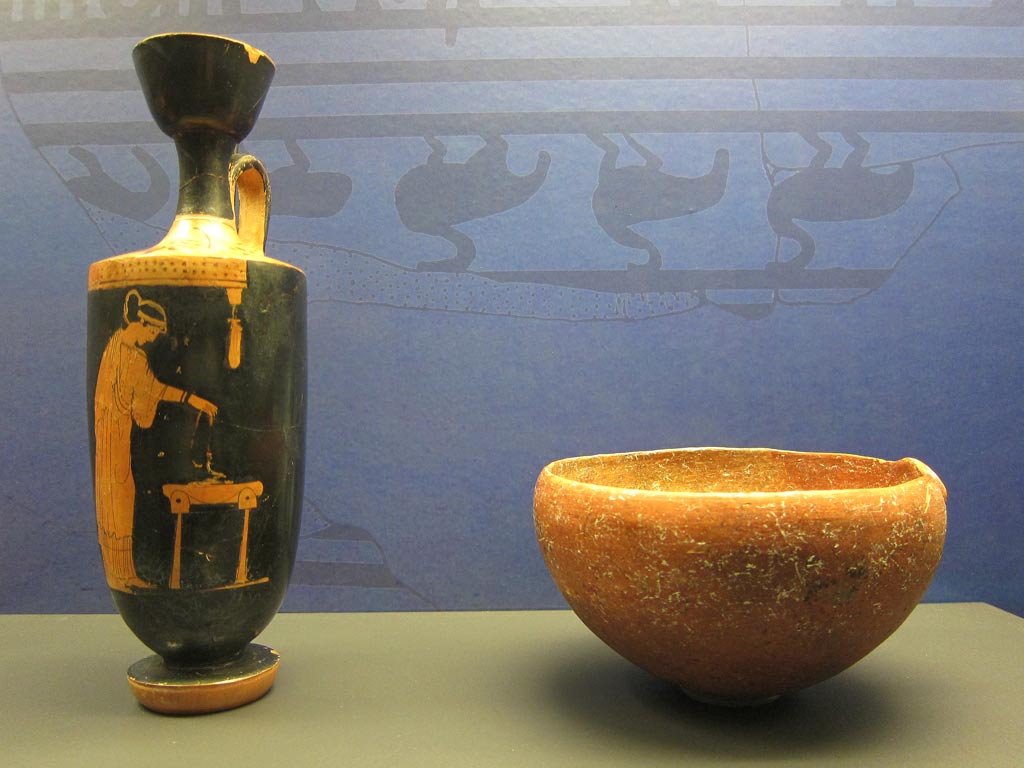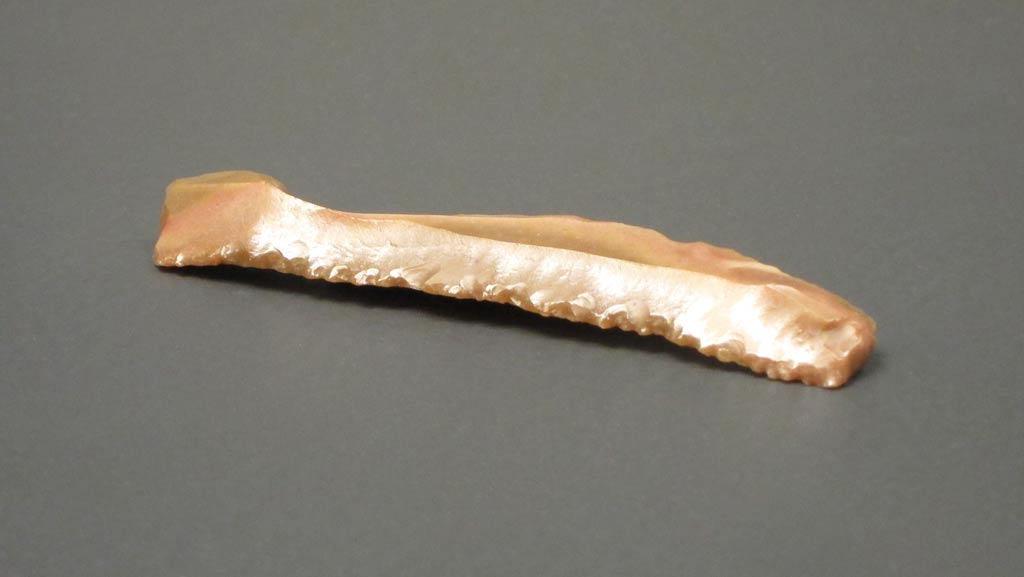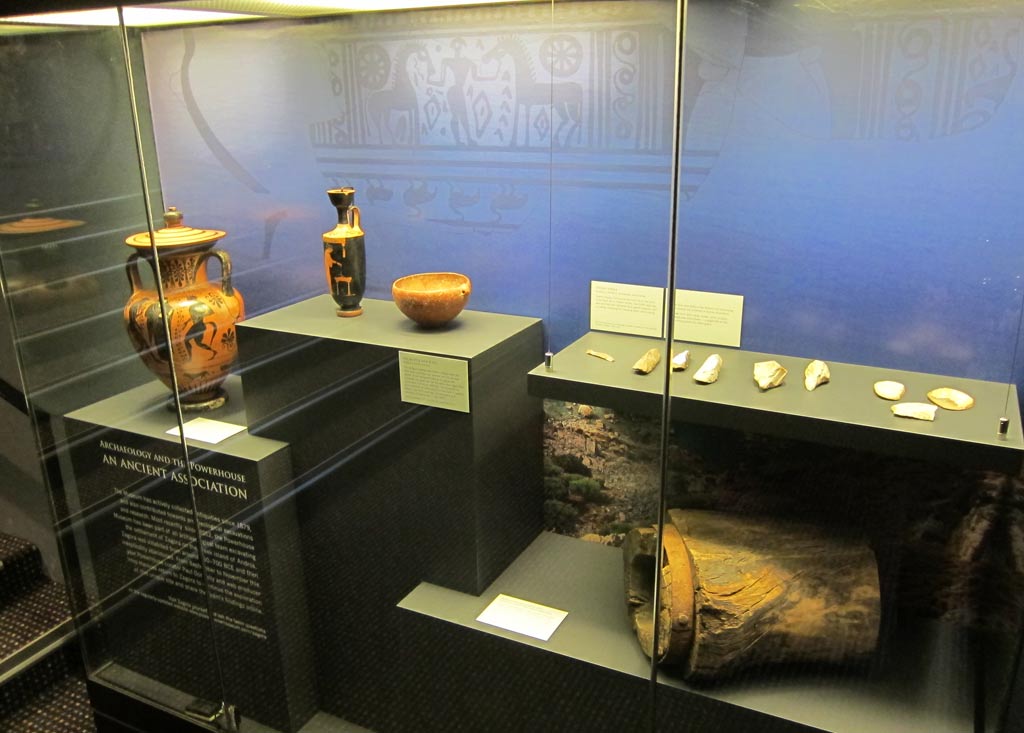
Powerhouse Museum curator and archaeologist, Paul Donnelly (and my Powerhouse parter in the Zagora Archaeological Project), arranged for a display (pictured at right) at the Powerhouse Museum to introduce visitors to the Zagora project and to raise awareness about the particularly close association of the Powerhouse with archaeology.
The Powerhouse Museum is part of the Museum of Applied Arts and Sciences. We present exhibitions and programs about the applied arts and sciences, that is, the objects produced through the application of arts and/or sciences, or, you could say, design and/or technology, and their influence on people and societies in the past, now and into the future. By understanding the objects – who invented, created, designed and used them, and when, how and why design and production techniques and technologies developed, we learn about how societies were shaped – just as archaeologists learn from the artefacts (pots, tools, etc.) and building structures they excavate.

Click the links in the captions to learn more about the objects in the display.
![[A4378] Attic black figure amphora, c. 520BCE](https://zagoraarchaeologicalproject.org/wp-content/blogs.dir/14/files/2013/11/IMG_7903_Attic_black_figure_amphora_c_530-510BCE.jpg)
![Detail of lion and boar from [A4378] Attic black figure amphora, c. 520BCE](https://zagoraarchaeologicalproject.org/wp-content/blogs.dir/14/files/2013/11/IMG_7908_lion_and_boar_detail_Attic_black_figure_amphora_c530-510BCE.jpg)
Powerhouse Museum exhibitions which have featured archaeological artefacts have included 1000 years of the Olympic Games: treasures of ancient Greece and Greek treasures from the Benaki Museum in Athens.


You see, archaeology and museums actually have a lot in common.

